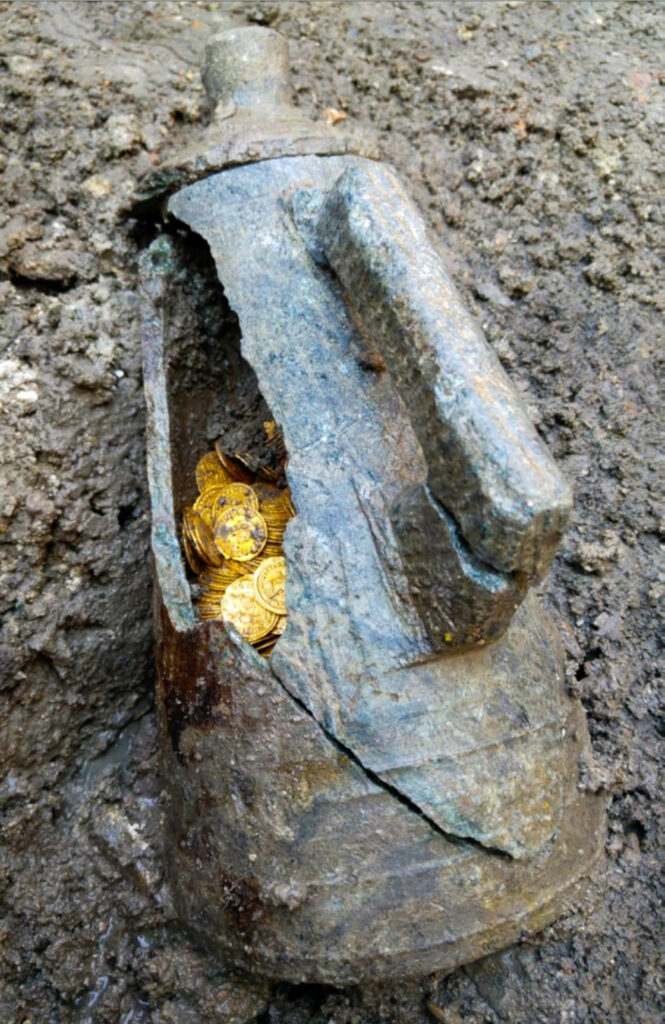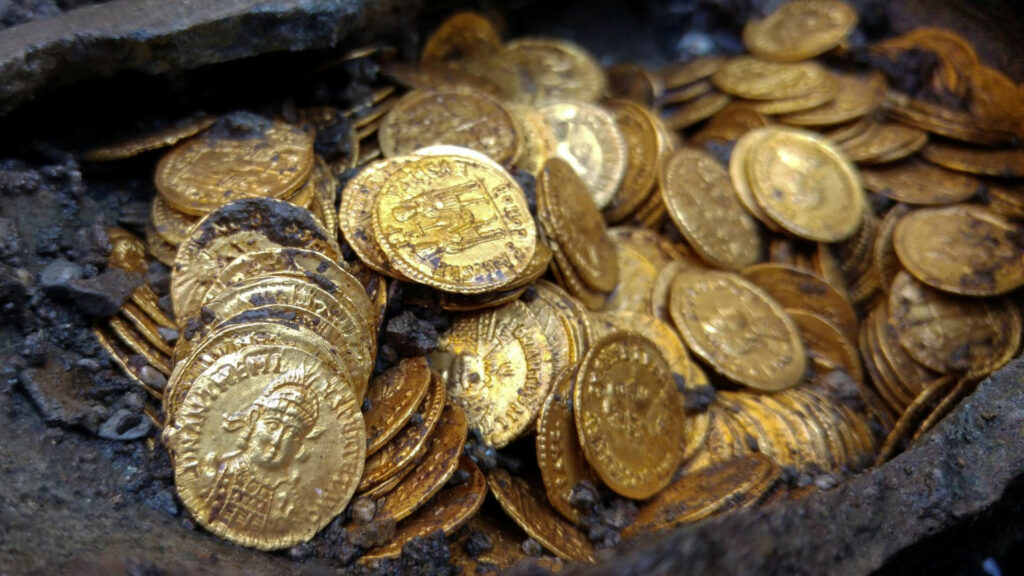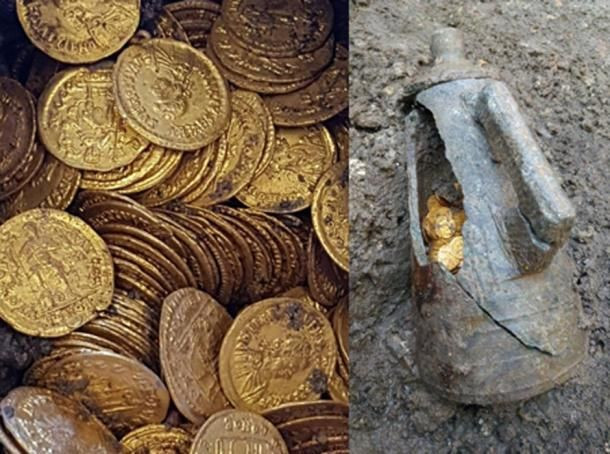Ancient Trove Dates Back Over 1,500 Years

A remarkable archaeological discovery has been made in the town of Como, located on the picturesque shores of Lake Como in northern Italy. Hundreds of Roman coins, at least 1,500 years old, were unearthed during an excavation at the site of the former Cressoni Theatre.
Coins Stashed in Soapstone Jar

The trove of nearly 300 coins was found hidden inside a soapstone jar, carefully stacked in rolls reminiscent of modern banking practices. Engravings on the coins suggest they date back to at least 474 AD, bearing the images of emperors such as Honorius, Valentinian III, Leon I, Antonio, and Libio Severo. In addition to the coins, archaeologists also uncovered a golden bar within the jar.
A Public Bank or Deposit?

According to Maria Grazia Facchinetti, an expert in rare coins, the way the coins were buried indicates they could be retrieved quickly in case of danger. She stated:
“They were stacked in rolls similar to those seen in the bank today. All of this makes us think that the owner is not a private individual but rather a public bank or deposit.”
Potential Multimillion-Dollar Value

While the exact historical and cultural significance of the find is yet to be determined, the discovery has already generated considerable excitement. Italy’s Minister of Cultural Heritage and Activities, Alberto Bonisoli, expressed his pride in the remarkable find, stating:
“We do not yet know in detail the historical and cultural significance of the find, but that area is proving to be a real treasure for our archaeology.”
Preservation and Study Underway
The coins have been transported to a restoration laboratory in Milan, where archaeologists, restorers, and rare coin experts will work on preserving and studying the ancient treasure. The site of the discovery, the former Cressoni Theatre, served as a theatre from 1807 to 1997 and is located near the Novum Comum area, where other significant Roman artifacts have been found in the past.

As the investigation into this remarkable find continues, the world eagerly awaits further insights into the historical significance of this hidden Roman coin treasure.

